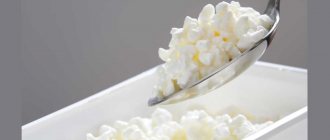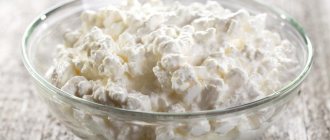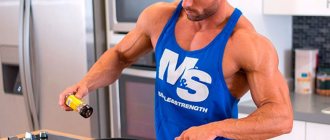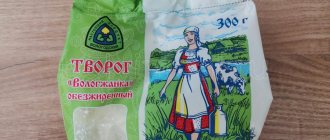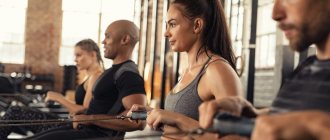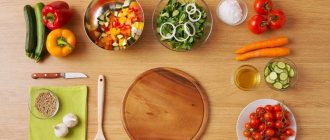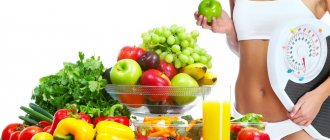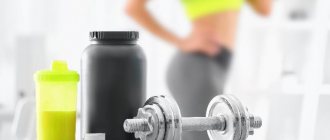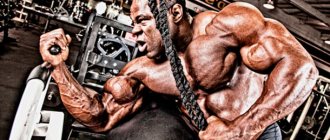Some believe that you need to eat low-fat, others - on the contrary, with a high percentage of fat. Why is cottage cheese so useful? And which one is better to choose? Let's figure it out together with a nutritionist.
Taisiya Prokopenko
nutritionist
The main principle that I adhere to in my work: it is not so important what you do in life, whether you lead a healthy lifestyle or not, since each person needs to receive a certain amount of nutrients per day, based on their physiological data.
Have you worked out? Have a snack with cottage cheese!
Intense stress on muscles damages them (which is why they hurt for a while after). To recover, they need protein, for example, milk - casein, which is presented in the best way in cottage cheese.
Different types of cottage cheese have different amounts of protein:
- in low-fat and low-fat (up to 3.8% fat) - 18%;
- in medium fat (4-9%) - 16%;
- in fat (12-23%) - 14%.
Due to its slow absorption, this product provides a gradual supply of nutrients (amino acids) over several hours and is well satiating.
Who needs calories?
The diet of athletes differs from the diet of those losing weight primarily in calorie content (due to fat and “light” carbohydrates). For the former it is higher, for the latter it is lower, so both choose cottage cheese with different fat contents.
The number of calories depends on the amount of fat in the cottage cheese. In 100 grams :
- low-fat and low-fat - 90-115 kcal;
- medium fat - 159 kcal;
- fatty – 232 kcal.
What is missing?
Do not rush to eat only low-fat cottage cheese after training. In addition to protein and energy content, the menu should be balanced in vitamins and minerals, which “leave” from milk along with animal fat. Thus, fat-soluble vitamins A, D, E, lecithin, cephalin are lost, and the remaining calcium and phosphorus cease to be absorbed when the fat content is below 9%. Missing nutrients should be replenished through other foods and nutritional supplements. Therefore, after training, choose fatty types of cottage cheese!
Difficulties in choosing: which cottage cheese is the healthiest
What is better after a workout - protein or cottage cheese?
Athletes involved in sports at a professional level highly appreciate cottage cheese. The whole point is its ease of digestibility, which we already discussed in our article. At the same time, the unique composition of the product allows us to talk about its total benefits for the whole body. After training, the body experiences a severe deficiency of nutrients and proteins, which can be replenished with just one cottage cheese. It has the property of being processed slowly, providing energy for a long time, without the annoying feeling of hunger.
Industrially produced protein is a popular and sought-after product on the market, highly valued by a large number of athletes. It absorbs well and usually has a very rich composition. However, its price can be steep. With the same properties, as well as natural ingredients, cottage cheese will cost several times less.
Rules for choosing and eating cottage cheese
Cottage cheese is available in almost every store that sells lactic acid products. Some people prefer to buy it on the market, which is also quite acceptable. There are a few simple rules that will help you determine a good quality product, especially if you buy it from a seller secondhand.
- Only natural cottage cheese is suitable for sports nutrition or weight loss. No cheese curds with fillings, much less chocolate or sweet curd masses, are suitable for these purposes.
- No cottage cheese can have a bluish or greenish tint. This is a clear sign of a chemical component. The natural product should be white-cream in color.
- If possible, try the product you want to buy. It should have a delicate milky taste. There shouldn’t be any strong acid or even bitterness.
- High-quality cottage cheese has a grainy but fairly uniform texture that can be rubbed with your fingers without leaving any grains. It should be moderately moist. That is, liquid cannot drip from it, but you also cannot take an overly dry option.
- If you are shopping at the market, it doesn’t hurt to check the seller’s documentation. Only a fresh product from a healthy animal will be useful.
- In the store, keep an eye on the expiration date. If it comes to an end, then it is better to refuse the purchase.
Not every time, but at some meals, the cottage cheese can be easily varied so that it does not get boring. It goes very well with fresh berries, fruits and even vegetables. You can simply mix the product in a bowl with the selected filling, or you can thoroughly beat it with a blender. Then you will get a nice air mass.
How to make homemade cottage cheese
To prepare good cottage cheese in sufficient quantities, you will have to follow a few simple rules. Firstly, it is optimal to take home-made milk, from the cow, and not a powder substitute for long-term storage. From a three-liter jar you can get approximately 600-900 grams of pure product. In addition, there will be a small jar of cream or even sour cream left.
Secondly, milk needs to be fermented in a warm place. Putting it in the refrigerator is strictly prohibited. In the cold, it is poorly separated into curdled milk and a thick fraction, and in addition, it acquires a bitter taste and an unpleasant musty odor. You should start making cottage cheese within three days from the moment your milk has completely soured.
Ingredients
- Milk – 3 liters.
Preparation
Leave the can of milk uncovered in a warm place. If you need to protect the liquid from dust, insects or other foreign objects, you can cover it with clean gauze.
- As soon as the milk sours, sour cream will collect on its surface. It must be collected very carefully from the surface of the curdled milk. The easiest way to do this is with a regular spoon. This sour cream can then be used in cooking or eaten just like that.
- To ensure that the jar is evenly heated, take a long knife and cut the thick fraction of milk crosswise all the way to the bottom.
- In a deep saucepan, selected according to the size of the jar, place a piece of fabric or a special device on the bottom so that the glass does not burst. Place a jar on top of it and fill it with water.
- Without covering the container with a lid, we begin to heat the water over medium heat, while at the same time our yogurt is heating up. The readiness of the product can be determined by the fact that the whey has completely separated from the curdled milk, leaving a thick fraction, which is our curd. It rises and then sinks to the bottom, cracks appear in it. The finished product is greatly reduced in size.
After letting the jar cool, you need to strain the cottage cheese. The easiest way to do this is with a piece of gauze. Fold it in several layers, pour your curd into it, gather all the edges together, and then hang it over a bowl overnight. During this time, all the liquid has time to drain, and you get a tasty and healthy product.
How to eat cottage cheese after training
The decision to eat or not after a workout is made based on the purpose for which a person goes to the gym: to lose weight or grow muscles.
In the first case, a woman or girl is recommended to have a cottage cheese snack (100-150 g) after training (in the evening, including) after 30-40 minutes or even an hour or two, while internal fat reserves are used. If you do not wait at least a minimum period of time, the body, having received an alternative, easier way to get energy, will stop burning fat and switch to what it has just eaten.
Low-fat cottage cheese will not return the calories spent on the exercise machine (if you maintain half the proportion: for example, 600 kcal spent 300 kcal ate), but weight loss will also stop. You also can’t delay eating for too long, as it “burns”, releasing energy, not only fat, but also muscle tissue.
In the second case, when training is aimed at gaining weight (usually the male half of trainees is interested in this), it makes sense for a man to close the anabolic window (eat something protein-carbohydrate) if he went to the gym on an empty stomach, and not if he had eaten beforehand.
The anabolic window is the first 30 minutes after training, when muscles are most receptive to the proteins and carbohydrates consumed at this time, and are intensively restored and grown.
Sports nutrition before and after training
The totality of all the nutrients, vitamins and minerals the body receives forms the daily diet. Your progress and success in achieving your goals will depend on how correctly you create your menu for the day. Every meal matters, but there are times when getting the right nutrients is especially important: before and after exercise.
Before training
Working out is your golden hour. A limited time in which you must perform as well as your body allows. To prevent your body from reaching its full potential at the most crucial moment - what could be more irrational and stupid? However, many do just that.
Imagine that your mind is a rally driver, and theoretical and practical knowledge and skills act as a navigator, telling you the right way. Together you go towards your goal that you so want to achieve. You spent many days preparing for the race, studied every turn, but forgot to refuel the car. And so you go to the start with an empty fuel tank. Failure? What a great one!
What does rally and an empty tank have to do with it? This is exactly the situation that people find themselves in when they do not pay enough attention to nutrition before exercise. Doesn’t it bother you that a couple of hours before training you already had a slight feeling of hunger? Where will the body get the resources to do the hard work? How long will you last? As a result, glycogen reserves are reduced and quickly disappear; therefore, there is no strength either, and the muscles literally burn out.
This mainly happens due to a misunderstanding or overestimation of the capabilities of one’s own body. Many people believe that what they eat for lunch or breakfast is enough to train, but if you come to class hungry, then there is no question of any productive training. Fatigue sets in almost immediately, you have to increase rest time, reduce weights, and reduce the number of approaches. And what's the result?
You literally run away from the gym and try to justify yourself: “Okay, today was a hard day, I’m tired, I’ll go home, but I’ll definitely work out the next lesson in full.” Seriously? Everything will be exactly the same until you finally start eating right before training.
Before exercise, the body must receive carbohydrates and proteins .
Carbohydrates will allow your body to store enough glycogen to fuel your muscles throughout your workout.
Squirrels will also come into play. Many people mistakenly believe that protein should only be taken after a workout, but muscles always need amino acids, and especially during exercise. Getting enough amino acids will create the right anabolic climate in the body, promoting more effective growth and recovery of muscle tissue after training.
But fat is not needed before training . Firstly, fatty foods stay in the stomach longer. Exercising with a feeling of heaviness in your stomach is uncomfortable and is fraught with a sudden “booooee” right during training. Secondly, fat interferes with the absorption of other beneficial substances.
Eating regular food 1.5–2 hours before training is a good option when you have time to cook and the ability to carry food with you. Well, if you can also warm it up before eating, then that’s great.
Sports nutrition is more convenient in this regard. It doesn't need to be cooked. A shaker with a pre-prepared dry mixture is lighter and takes up less space. A bottle of water, milk or juice is also easy to transport, and mixing a cocktail will take a maximum of a minute and does not require heating. There are completely hopeless situations when it is not possible to even take a shaker with you, but for these cases there are solutions - protein-carbohydrate bars. You can literally snack on them on the go. In addition to convenience, sports nutrition is simply more effective.
Whey protein is the fastest way to give your body protein. It is absorbed much easier and faster. It can be taken an hour before training, when regular food no longer has time to be absorbed. If you train in the morning, when very little time passes between waking up and starting your workout, regular food will not do at all.
Whey Protein VPLab 100% Platinum Whey
It is useful to include a BCAA complex in protein to fully provide muscles with amino acids.
As a simplified alternative to mixing protein, BCAA and finding the optimal source of carbohydrates yourself, a gainer is suitable. The gainer contains protein, carbohydrates, sometimes BCAA, creatine and other useful additives in fairly balanced proportions. Look at the composition, add the missing components based on your needs and goals.
An even more advanced option is pre-workout mixtures , designed specifically to be taken before exercise. Their composition is optimized to create the best conditions in the body for working with upcoming loads.
Pre-workout complex VPLab NO Starter
If bulking, your pre-workout meal should include 20 grams of whey protein with the addition of 5 grams of BCAAs and about 50 grams of carbohydrates. When losing weight, you need to reduce the amount of protein to 15 grams, carbohydrates to 15–20 grams and add L-carnitine to enhance the fat-burning effect.
After training
The body's needs after exercise are the same as in the pre-workout period: carbohydrates , proteins and less fat to avoid delayed absorption of nutrients. Eating after a workout is especially pleasant because you can include fast carbohydrates , that is, carbohydrates with a high glycemic index, without negative consequences.
Protein and carbohydrate levels are slightly higher than pre-workout: when bulking, it is recommended to take 25-30 grams of whey protein with the addition of 5-8 grams of BCAA, and the amount of carbohydrates can be increased to 60-100 grams, based on body weight and goals.
IMPORTANT! When losing weight, you should not take carbohydrates within 2-3 hours after training, otherwise the body will stop using its own fat reserves and switch to food. BCAA can be taken in the same volumes as when gaining weight, and whey isolate with the highest degree of purification is preferable as a protein source.
A post-workout gainer remains a simplified alternative to mixing individual nutritional components yourself.
As an advanced replacement for a universal gainer, you can take a specialized recovery mixture .
Recovery complex VPLab Ultimate Recovery
Caffeine and other stimulants are contraindicated within two hours after exercise, as they interfere with the body's ability to restore glycogen reserves.
Special attention is always paid to post-workout meals. This is due to the popular belief that after exercise, the so-called anabolic window , also known as the protein-carbohydrate window, opens.
What it is? Different experts put their own meaning into the definition, but simply put, the anabolic window is when the nutrients received are used to the maximum to restore energy reserves and build muscles, without the formation of fat mass.
The problem is that the anabolic window phenomenon is poorly understood. Different studies provide different and sometimes contradictory data, but let's think constructively. If a window exists, eating after exercise is extremely important. If it doesn’t exist, you still need to eat to give the body nutrients for repair and growth. In any case, there is no harm from a post-workout meal, so just give your body everything it needs in accordance with your goals and don’t worry about unnecessary things.
Before training you can too
Is it possible to eat cottage cheese before training? Yes, for the same reason as after. One serving (200 g) of low-fat cottage cheese before training will make it physiologically successful and correct. Casein, which makes up 70% of milk protein, is absorbed slowly, so it is even preferable to consume cottage cheese 1.5-2 hours before training or before bed.
However, it does not contain enough carbohydrates, therefore, it must be combined with energy-rich foods, preferably 30 minutes before training. A great addition is banana.
What to include in your pre-workout diet and what to avoid
When choosing the right food before training, we focus on what can give energy. In terms of calorie content, this should be approximately 300-500 Kcal per 30-40 minute session. Based on numerous studies conducted on what would be most beneficial to eat before training, the following recommendations were developed:
- We create a menu, adhering to the formula “slow carbohydrates + a little protein.” Complex carbohydrates take a long time to digest, so the incoming energy is enough for the entire workout. Oatmeal, buckwheat, rice, durum wheat pasta, and wholemeal bread provide us with carbohydrates.
- To this side dish we add boiled chicken or turkey, steamed fish, lean meat (beef or veal), and an omelette.
- You can add some vegetables, fruits and berries, which will not cause frequent desires to leave the gym during training.
- Don't forget about cottage cheese or kefir.
- Before exercise, it is also useful to eat foods that contain caffeine and arginine: they dilate blood vessels, increasing blood flow to the muscles.
- Before particularly intense workouts that require increased energy consumption, it is recommended to take special pre-workout complexes from the category of sports nutrition. But due to the specificity of some components in these complexes, they can only be taken after consulting a trainer or doctor.
This diet is quite suitable as a source of energy for those who want to gain muscle mass or lose weight. Fast food, fried foods, sweet flour products, sauces and dressings based on mayonnaise require absolute exclusion, otherwise you will be guaranteed belching, nausea, heaviness and stomach pain.
If you need to lose weight
For weight loss, choose low-fat varieties of cottage cheese ; evening portions are made small, 100-150 grams.
For drying, use a product with 5% fat content . A low-fat product is not suitable at all, since the hormone calcitriol, which is responsible for weight loss, is synthesized with the participation of calcium, which cannot be absorbed from cottage cheese without milk fat.
Forbidden:
- eat cottage cheese 2 hours before and 1.5 hours after training,
- add sweets (honey, syrup) and fatty foods.
Choose right and eat right
Only natural cottage cheese is suitable for proper nutrition. Sweet curd mass and cheese curds are not suitable for these purposes. They contain large amounts of sugar and artificial additives. There is no need to talk about the high protein content in such products.
What should not be combined with cottage cheese?
When consuming cottage cheese, you should refrain from simultaneous intake of protein-rich foods. These include legumes, eggs, meat, fish and nuts. Bread, potatoes, and cereals are not recommended. Without a doubt, we exclude sugar in any form.
What is best to combine with
The taste of cottage cheese will become better:
- with sour cream (not for those losing weight), kefir;
- fresh berries and fruits (mixed or whipped);
- dried apricots, prunes, raisins (source of microelements).
Before training, you can eat cottage cheese and banana: this way, in addition to proteins, the body will also receive a supply of carbohydrates. Cottage cheese with honey or sugar (no more than 1 tablespoon per serving) is consumed if you are at the stage of gaining muscle mass.
How much cottage cheese do you need for muscle growth?
If your goal is to build muscle mass, then cottage cheese is your indispensable assistant. The average norm for a person per day is 200 - 300 g, but exceeding it will not harm you. The daily requirement depends on a number of factors: body weight, intensity, duration and purpose of training. On average, the amount of cottage cheese consumed will not exceed 500 g per day. You should also not neglect other foods containing protein, such as eggs, chicken breast and fish.
Proteins fats carbohydrates
Fat is not useful for providing energy to the body during exercise. Because because of it, the absorption process will be slowed down, and blood circulation will be concentrated on digestion, while it is useful for muscle function. The fat supplied with low-carb foods will be sufficient.
Proteins are sources of amino acids, not energy. They take part in building muscles after exercise.
You can include turkey meat, chicken breast, brown rice, grain bread, egg whites, vegetable side dish, and oatmeal in your diet. It is worth eating more fish (not fried) and fermented milk products with a low fat content.
Carbohydrates are a good source of energy. But they must be complex and difficult to digest (fruits, vegetables, cereals) so that during and after training they gradually release energy to the brain and body.
Simple carbohydrates, which are found in sweet and starchy foods, cannot provide a long-term and stable supply of energy. In addition, they increase blood sugar and quickly turn into fat reserves.
Is it possible to exercise on an empty stomach?
Is it possible to exercise on an empty stomach? Before answering this question, you need to understand what hunger is.
Hunger is a situation when your body has not received food for more than 8 hours. For example, after sleep or prolonged refusal of food during the day.
Any active action we take requires energy. The main source of this energy is food. If the body does not receive energy from food, it begins to compensate for it from its reserves.
It is a common belief that when you are fasting, your body starts burning fat to replenish energy. Unused fat remains in reserve until next time. This is true, but not entirely.
In addition to fat, the body can burn protein in the muscles, reducing muscle mass. This is especially bad for those who are training to increase muscle size. In addition, without food, cortisol can be produced, which also “eats” muscles.
You can exercise for a maximum of 20 minutes on an empty stomach. And then only with aerobic exercise, like cycling or running.
Without food, the body can become very weak due to a drop in blood sugar levels. Weakness affects a decrease in concentration, contributes to dizziness, nausea and tremors in the limbs. This condition increases the risk of injury during exercise.
Therefore, we do not recommend training on an empty stomach. Because this can lead to injury and deterioration of your health. Of course, the effect of training on an empty stomach may be different for everyone. Therefore, to begin with, we advise you to consult a specialist on this issue.
Improved hydration
Another beneficial property of curd products is their ability to provide optimal hydration levels for the body. Even light exercise results in significant water loss. Eating cottage cheese allows you to restore the necessary balance without the risk of accumulating excess fat. Especially if you eat it in combination with other products: sour cream, fruits or vegetables. This ability of curd products is relevant for those who want to lose excess weight.
Some useful tips
- Immediately before training, it is better to refuse food, since the work of the digestive organs will distract from physical activity.
- You should not exercise on an empty stomach. This means that you need to eat within 8 hours. Then the metabolism will turn on, accelerating metabolic processes.
- Monitor your calorie intake and don't deviate from it. If the diet is poor, the body will slow down its metabolic rate. He will do this to restore the energy balance and compensate for the lack of consumption. The approximate calorie intake can be calculated using a special calculator.
